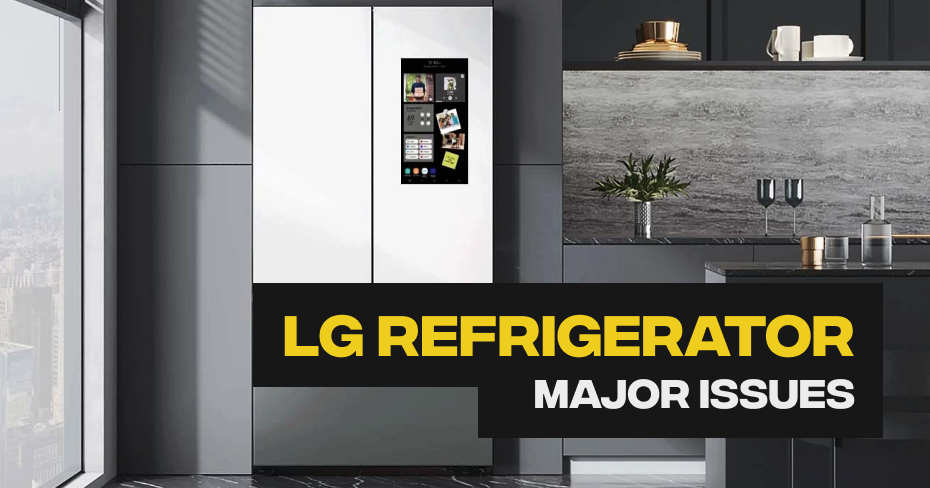
Lg Refrigerator Temperature Fluctuations
If your fridge temperature keeps changing, try checking the vents, cleaning the coils, and checking the door seal. Refrigerator temperature may also change due to the door being opened too often, someone else changing the temperature settings. It could also be caused by a failed electrical component.
Fluctuations from Opening the Door
If your fridge door is open too long or too often, your fridge will struggle to keep the temperature stable. On the other hand, frequent opening and closing of the door can also lead to your fridge overcompensating.
Your fridge might sense that the temperature is rising and generate a ton of cold air. However, this air is trapped in the fridge when the door quickly closes and the temperature drops too far. The result is a temperature that fluctuates between too warm and too cold.
This is the simplest problem to check. If you’re noticing that your fridge’s temperature fluctuates a lot, try minimizing the amount you open it. See if it becomes more stable after a day or two.
Temperature Settings Adjustments
The next step is to check your fridge’s temperature settings. Your fridge may not be seeing temperature fluctuations – someone else who uses the fridge might be adjusting the thermostat.
Check the thermostat settings from day to day to see if it changes.
If your fridge’s thermostat settings are changing, then check with other people to ask why they’re adjusting it. On the off-chance that no one is adjusting your thermostat, then you might need to reset the fridge’s thermostat.
That can help shock the cooling system into keeping the temperature stable.
Blocked Vents
Blocked vents are a common reason for fluctuating fridge temperatures.
Warm air is exhausted as part of the cooling process. If this air can’t escape, it’ll heat the fridge up.
Make sure your fridge has a couple inches of ‘breathing room’ on all sides to ensure it gets proper ventilation.
Blocked Thermostat Sensors
Blocked thermostat sensors can cause the same problem. If food containers are too close to the fridge’s thermostat, they can make the thermostat less effective.
Warm food containers by the thermometer will lead to the fridge getting too cold. On the other hand, if cold food is too close to the sensor, the thermostat might let the rest of the fridge stay too warm.
To fix problems caused by blocked sensors or vents, rearrange the food in your fridge. Move food away from the sides and back of the fridge. In particular, move food away from any visible vents on the walls or ceiling. Then let the fridge run for several hours and see if temperatures stabilize.
Dirty Compressor Coils
If your thermostat or food arrangement don’t seem to be the problem, then it’s time to start checking for deeper issues.
In order for your fridge to create cool air, it needs to use a refrigerant system to remove heat from inside. Essentially, a constant cycle of gas compression and evaporation is going on in the inner workings of your fridge. The heat this cycle pulls out has to go somewhere, and that’s what compressor coils are for.
Compressor coils are the winding metal tubes on the back or bottom of your fridge. These coils need to stay clean if they’re going to do their job of releasing heat. Dirty, dusty, or blocked compressor coils will cause your fridge’s temperature to fluctuate wildly. They need to stay clean to let the heat escape, or it just circulates back into the fridge.
Cleaning compressor coils is easy:
- Unplug your fridge and move it away from the wall so you can get to the coils.
- Take a vacuum hose with a brush attachment and carefully vacuum up any dust and cobwebs that might have built up on the coils.
- Take a damp cloth and wipe down the coils gently.
- Plug the fridge in and confirm that it’s working again.
This should take care of most fridge temperature problems.
Bad Door Seal
The last fridge temperature problem that’s easy to fix is a faulty door seal. If your fridge’s door seal is unreliable, then cold air will constantly be leaking out. That will lead to temperature changes and a fridge that’s constantly running.
The easiest way to check the seal is to look at it. If any part of the seal around the door looks warped, bubbled, or dirty, then it’s probably causing your problem. You can fix the seal by ordering a replacement gasket from the manufacturer site. These seals come with easy-to-follow instructions for repairs.
Broken Electrical Components
Finally, if none of the solutions above solve your problem, then your fridge probably has some broken components. Over time, circuits in the thermostat can go bad or the compressor can wear out. The result is a fridge that seems to have gone crazy for no reason.
If your fridge is still new, then taking it apart can void your warranty, so it’s best to let professionals work on it instead. They will be able to replace the part in most cases. Otherwise, they’ll let you know that it’s time to replace your fridge with something new.
Schedule Appointment
